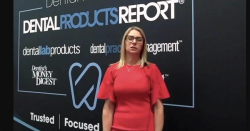- About Us
- Advertise
- Editorial
- Contact Us
- Terms and Conditions
- Privacy Policy
- Do Not Sell My Personal Information
© 2025 MJH Life Sciences™ and Dental Products Report. All rights reserved.
Breaking up the Band: Separating Business When Co-Owners Split
Breaking up is hard to do. Here's how to prepare for the break-up of a practice partnership.
Breakups of any type can be hard. Lucy leaving Desi fractured the ideal of a perfect marriage. The Beatles parting ways scarred a generation. And although it’s unlikely a dental practice will separate because of Yoko Ono, the dissolution of an ownership partnership can be just as challenging of a relationship split.
“A partnership is like a marriage,” says Stanton Kensinger, lead broker at Professional Transition Strategies. “Unfortunately, it’s just not going to work out 100% of the time.”
Although not all business separations are as emotional as Ringo and Lennon going their separate ways, there is a wide range of reasons that dental practice owners decide to end their partnerships. Some are for positive reasons—financial gain or a ticket to retirement—and some come in the wake of more difficult times.
“We see partners going through the process of splitting up for numerous reasons, be that retirement, disability, divorce, financial loss, drugs, gambling, a partner losing [their] license—you name it,” Kensinger says. Despite the reason, having a smooth and atraumatic separation is possible—and even easy—for many partners. A few things that all these successful partnership splits have in common: They planned ahead, they had clear expectations, and they went through each step as a team.
Be Prepared
The first step for a successful separation is being prepared from the very beginning. Although separation may not be a primary concern at the start of a partnership, eventually it will happen, whether that be because of retirement, disability, or a dispute. To streamline the eventual separation process, it’s best to get an ironclad partnership agreement before going into business together.
“I am always surprised by the number of dental practices with more than 1 owner that don’t [have] written agreements,” says Bruce Bryen, CPA, CVA, a dental practice valuation analyst at Baratz & Associates, P.A. “The next biggest mistake is that they do have an agreement, but it’s lacking. [Oftentimes], it’s the cheapest thing they could find, and they just get an agreement based on the cheapest price rather than the experience of the person who’s preparing the agreement. But if you don’t have these things and you’re getting ready to split, it is like a divorce, and it can get messy.”
“You see people who started with just a handshake agreement or a ‘written’ agreement on the back of a cocktail napkin and things like that,” Kensinger says. “This is a great way to set yourself up for problems down the road.”
Although the temptation may be strong to cut corners and save money when setting up a formal, written preliminary agreement, it could save money in the long run. Generally, the cost to have an agreement drawn up will run around $2500 to $5000. Although this may seem like an unnecessary upfront cost at the time, it’s a lot cheaper than what it could cost you down the road if you don’t have one.
“When there’s no agreement and it’s a contentious split, you’re usually left with a courtroom to settle the case, which is really expensive,” Bryen says. “You’ll have to pay attorneys and experts, and it’s just so much cheaper to pay before you’re getting into all this. You should have an agreement when you get started because that’s the easiest time to get one.”
It’s the easiest time because it’s the simplest time. In the beginning, a practice may not be producing enough to even have a debate over. Spelling out things, such as income draw, vacation and sick days, benefits, delegation of roles, and separation of duties, can create clear expectations and head off a battle down the road. It’s also important to consider things like property—do you want to go into real estate together or both be guarantors on a lease? What happens if one needs to get out of the lease? Kensinger and Bryen agree that bringing in a professional to help answer these questions can be very beneficial.
“Make sure that on the front end, you have a dental-specific evaluator and/or dental business attorney that helps draft the clauses that [must] happen to [ensure] that if there is a partner divorce, exactly what [must] happen to avoid problems [is drawn out].”
When it comes time to separate, this can make a practice valuation go much more smoothly, because expectations will already be established and partners can focus on what they want the end goal of the separation to be. “It’s important to be on the same page and have your goals in place before even doing an evaluation,” Kensinger says. “So, if one doctor says, ‘I’m looking to retire and be out in a year. I hope you are OK with that, partner,” [then] it’s time for you to sit down and figure out what the practice is worth.”
Understand Your Value and Know Your Options
Figuring out what the practice is worth is the first step in separation. “For a partnership to transition, the best thing you can do right off the bat is figure out [what the business is worth]. Because you really can’t do anything until you know what your assets are or what goodwill you’ve produced here—you can’t evaluate the overall value,” Kensinger says. “Getting a dental evaluator or a firm, such as Professional Transition Strategies, to do an evaluation on the business is the [first] step.”
To determine the true value of the practice, owners should be prepared to turn to a dental practice evaluator. Bryen recommends ensuring your evaluator is specialized in the dental field so they fully understand what this specialized valuation requires, and not just a general business evaluator who may not know the intricacies of evaluating a dental practice.
“A good dental practice evaluator will understand how to evaluate goodwill,” Bryen says. “They can say how much goodwill is coming from this partner and from that partner, and it helps to determine what each partner would get.”
Once they’ve found a suitable evaluator, owners should be prepared to provide them with 2 to 3 years of tax returns and profit and loss, accounts receivables and credit reports, and a record of the most recent year’s production by provider so it can be fully determined which doctor is doing what and the percentage of what they are doing, depending on the partnership agreement they have in place. “There could be a percentage of buyout if one doctor is producing more than the other, so then we have to sift through and get whichever doctor is producing more compensated appropriately,” Kensinger says.
After valuation is complete, the second step is coming to terms with a purchase price, according to Kensinger. This must happen whether the partner is going to be purchasing out the other one, you’re trying to figure out what a purchase price is for an associate, or an individual is looking to come in and buy out a 50/50 partner. The third thing is to evaluate what your options are in the dental service organization (DSO) world.
“If a DSO is an option, that DSO can help streamline the transition process,” Kensinger says. “They’re going to be able to say, ‘Here’s what worked for other practices that we have in our portfolio. Here are some other partners we’ve worked with that had the same scenario. This is what we [can] do, and here are the options.’ You basically have an instant management team.”
The streamlining DSOs can offer is an increasingly enticing option. Kensinger says that as recently as 3 years ago, 80% of practice transitions that went through his firm were doctor-to-doctor sales. This past year, 91% of sales were to DSOs.
“With a DSO, you have a built-in team to come in and support your existing office through the transition,” Kensinger says. “Right off the bat, the DSO can provide resources to make it smoother. DSOs will say, ‘What’s the best work/life balance for you? What do you need to make this transition smooth? If a split is contentious, what can we do to make sure the 2 of you never have to work together or never have overlapping schedules?’ They have more bandwidth to problem solve whatever the situation is.”
In most cases, where separation sales go to DSOs, Kensinger says it’s a situation where an aging doctor wants to retire and there’s an age gap between partners. The DSO can help establish a plan for that exit, whether that be keeping the retiring doctor on for 6 months, 2 years, or whatever works for their timeline. The other doctor who wants to keep working can stay on board with equity within the practice or the DSO.
“There may be a DSO out there that would allow for the perfect scenario for the exit, not only for the retiring doctor but also for the younger doctor [who] has no desire to slow down or be bought out,” Kensinger says, “The number of DSOs that have entered the marketplace provides so many different options for doctors. They have different structures in which dentists can do very well.”
When Things Get Messy
Once partners have determined which route they want to go, it’s generally smooth sailing from there. However, there are occasions that arise when things don’t go as well as they could—or go south very quickly.
“Generally, partners want to work it out,” Kensinger says. “I’d estimate we’ve seen less than 1% or 2% go to mediation. Most tend to go smoothly because you usually have both doctors on board. However, it doesn’t go [as] smoothly when you’re dealing with financial loss."
Kensinger says financial loss situations arise for a variety of reasons, such as when one partner is getting a divorce, there’s a death, or there’s a situation with one partner using drugs. He’s also seen scenarios where one partner has gambling problems, or a doctor is being fraudulent and the partner doesn’t know about it.
“If one of the partners is generally just doing shady things, [then] unfortunately, this is a situation that requires the doctors to go back to their disillusion clause. Because a partnership is a marriage, and getting a divorce between partners is never a good process when any of those situations come to pass,” he says.
Bryen says if partners believe there’s any chance to settle, they should try to work it out by getting a dental practice evaluator, sitting down, and drafting an agreement so everything is spelled out. “The best thing you can do is get someone who is impartial,” Bryen says. “That would be a dental certified public accountant (CPA) or a practice evaluator. An evaluator can determine what the value is and what the goodwill allocation would be for each of the partners. It’s important because the evaluator is independent. If they are signing off and they’re independent, they only want to say what they think is right, not side with who is paying them.”
But sometimes, even with an independent evaluator, there’s just too much hostility to compromise. “Egos can get in the way,” Bryen says. “Sometimes you reach a point where co-owners just can’t sit down together; there’s just too much animosity. That’s where it can get expensive. Because if that’s the case, then you’re going to get an attorney, and that’s where you’re going to spend $50,000 to $75,000—and you still might lose the case. You never know what’s going to happen.
In short, letting emotion rule your decisions in a separation can be costly. “The cost is one reason why I always suggest you don’t get an attorney unless there’s just no way to resolve the issue without going to court,” Bryen says. “Be reasonable. If you’re at the point where it’s pure hate, then get a lawyer. Just be prepared to spend a lot of time and money.”
Although some separations do become contentious, with so many transition options available—partner-to-partner sales, associate sales, or DSO acquisition—partners should be able to settle separations fairly amicably and more easily than ever before.
“It’s a wonderful problem for doctors, that there are so many options,” Kensinger says. “Whether there is a partnership dispute or a breakup because of cultural or philosophical changes, there are solutions and resources to come in and meet the needs of all parties. Ultimately, we want doctors to make the best decisions for themselves, their families, their staff, and their patients. That’s what’s important at the end of the day.”

 Download Issue: Dental Products Report August 2022
Download Issue: Dental Products Report August 2022

